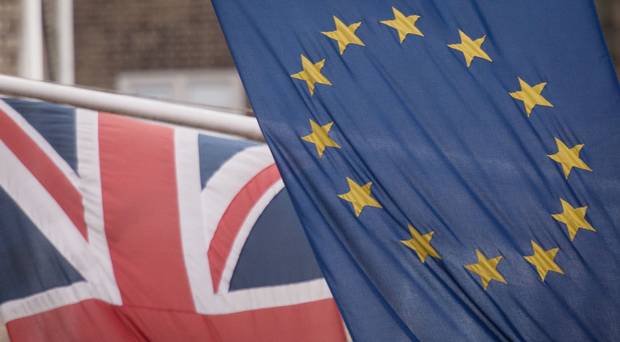Sterling hit a one-week low against the euro on Thursday after British Prime Minister Theresa May lost two parliamentary votes in two days, adding more Brexit uncertainty and raising the prospect she may soon face a general election.
Sterling reached a one-week low against the euro of 90.59 pence, down 0.3 percent on the day. It also dropped 0.40 percent against the dollar to $1.2737.
Expectations for sterling volatility declined, however, after British lawmakers demanded that the government come up with a plan B within days if May loses the vote on her Brexit deal on Jan. 15. That vote on Wednesday appeared to reduce the chances Britain will leave the European Union on March 29 without a deal on their future relationship.
“[Wednesday’s] vote … undermines the prime minister’s authority and brings up the possibility of a general election. She has lost two votes this week alone now,” said Societe Generale FX strategist Alvin Tan.
But the possibility that a new election could bring in a Labour Party government implementing high-spending policies weighed on the British currency.
Jeremy Corbyn, who leads Labour, the main opposition party, said on Thursday that a national election must be the priority if parliament rejects May’s deal. He did not rule out a new referendum on Brexit if an election cannot be secured.
“The idea that we could have a Corbyn government, with nationalisation policies that could mean more borrowing, a more expansionary and populist fiscal stance would be negative for the budget deficit and therefore for the pound,” said Rabobank strategist Jane Foley.
“We also we had the BRC (British Retail Consortium) data this morning that suggests consumer confidence has really been hit. Although the threat of a messy Brexit has been around for a while, it starts to become far more tangible when you see data like this,” she added.
British retailers failed to increase their Christmas sales for the first time since the depths of the global financial crisis a decade ago, adding to signs of an economic slowdown ahead of Brexit.
Even so, the risk that sterling will fall against the dollar was deemed the lowest in over four months, according to one-month risk reversals, a gauge of market positioning.
Expectations for sterling price swings have also diminished in the last few sessions, with investors now expecting less implied volatility over a one-month period.
The last time a vote on May’s Brexit deal was scheduled, in mid-November, the measure of sterling volatility climbed to a two-year high. The vote was eventually postponed and is now set for Jan. 15.
The fact that implied volatility is dropping before the vote suggests concerns are not as high now, according to Societe Generale’s Tan.
“The vote implies that parliament is taking a more muscular approach and asserting itself on the policy process, which in turn implies the probability of a no-deal Brexit has fallen,” he said. “You can see that reflected not so much in the spot exchange rate but in the implied volume.”














